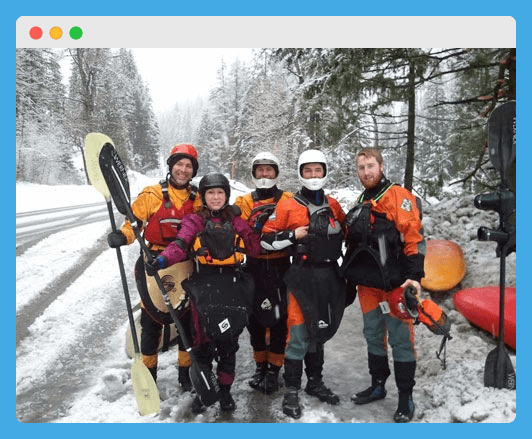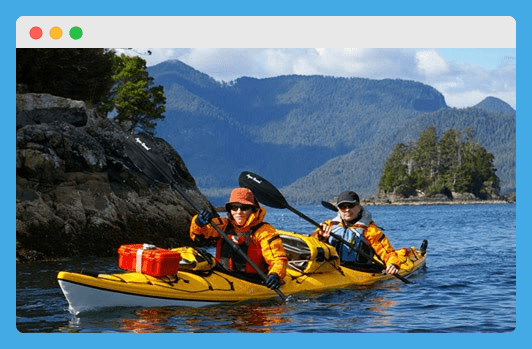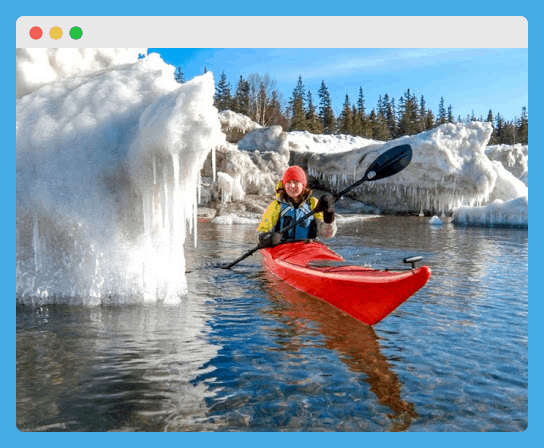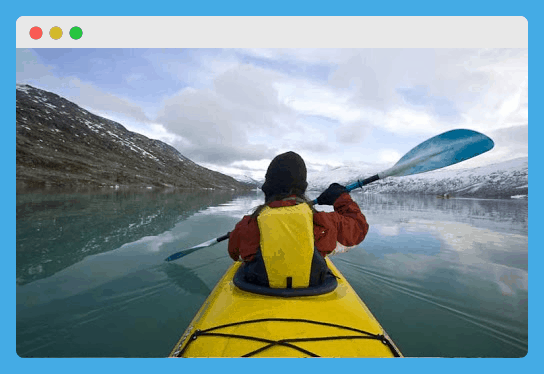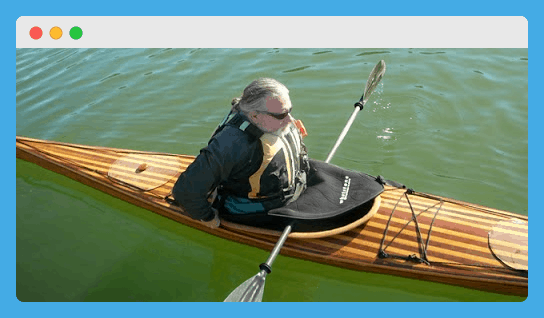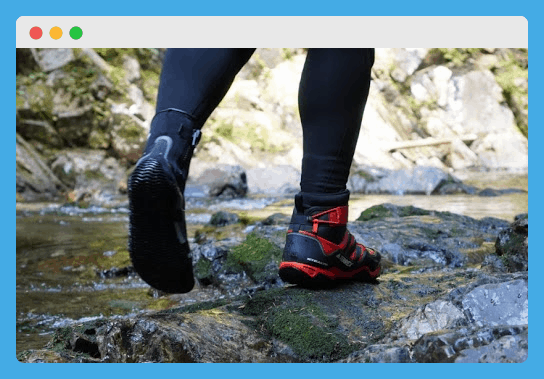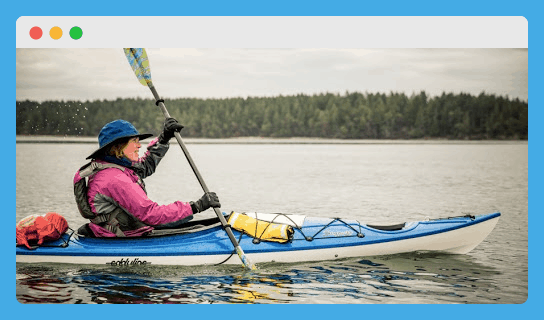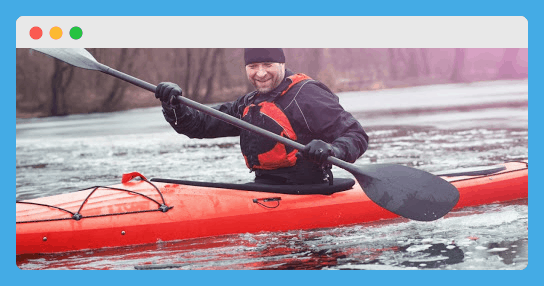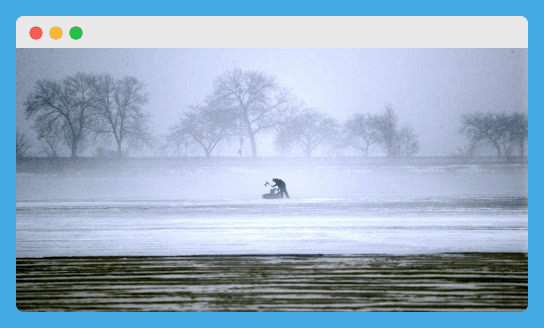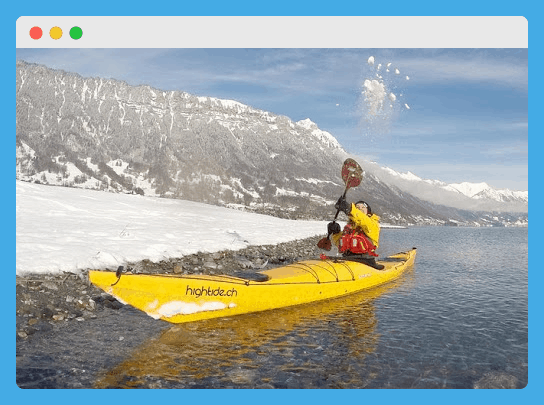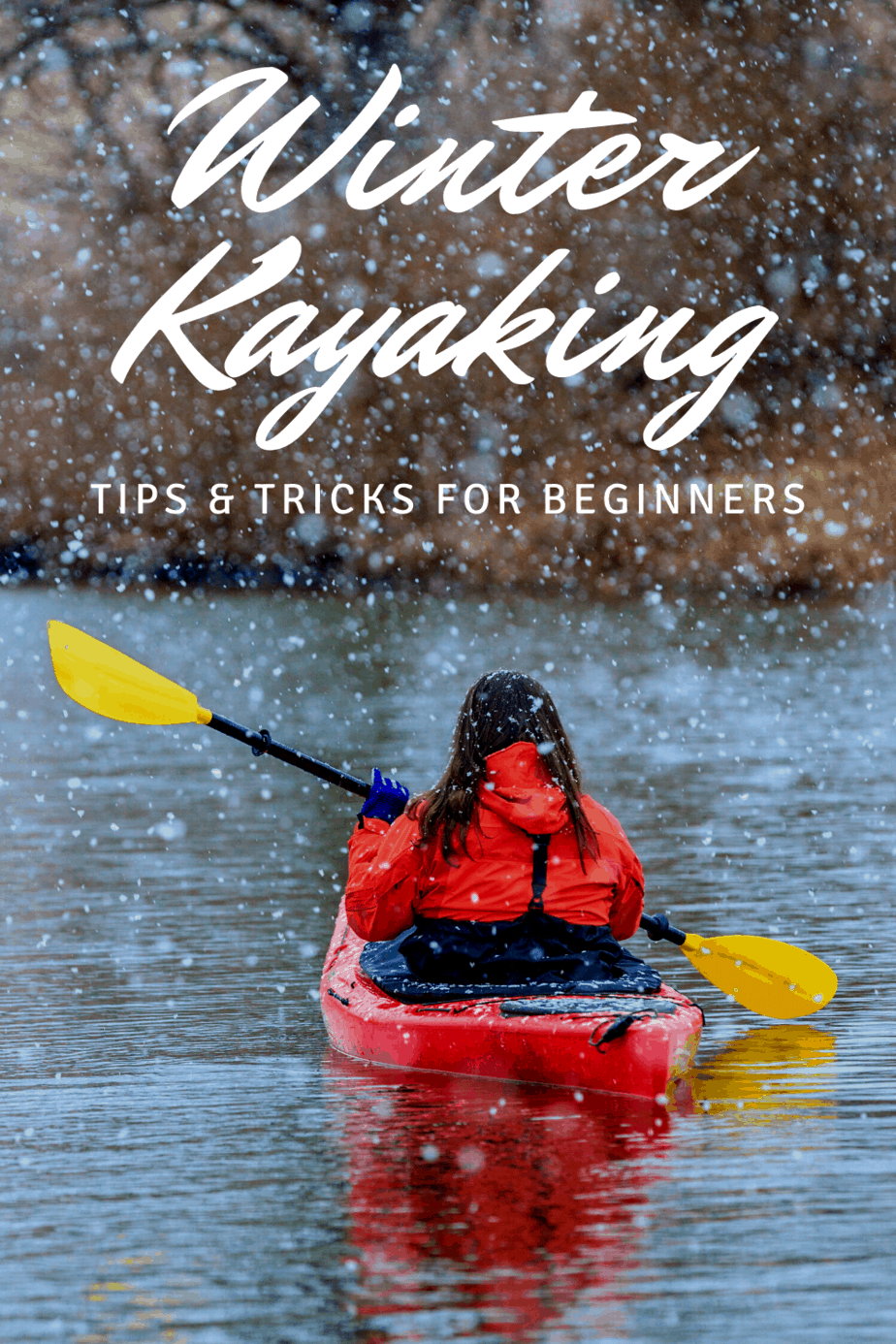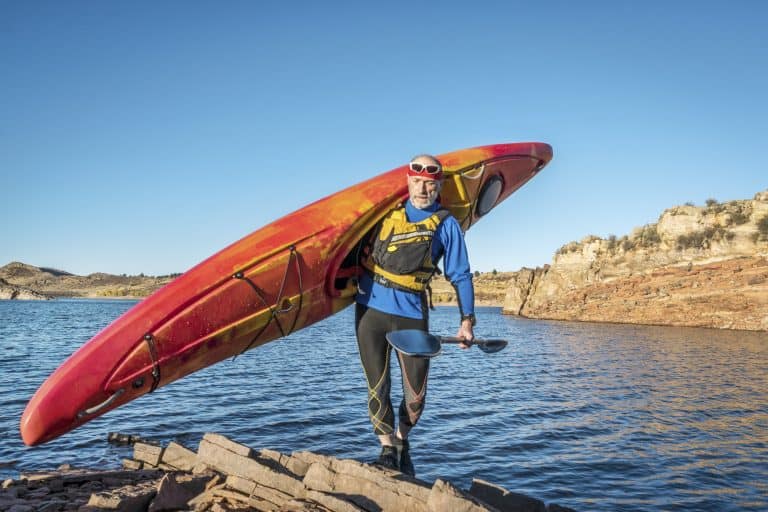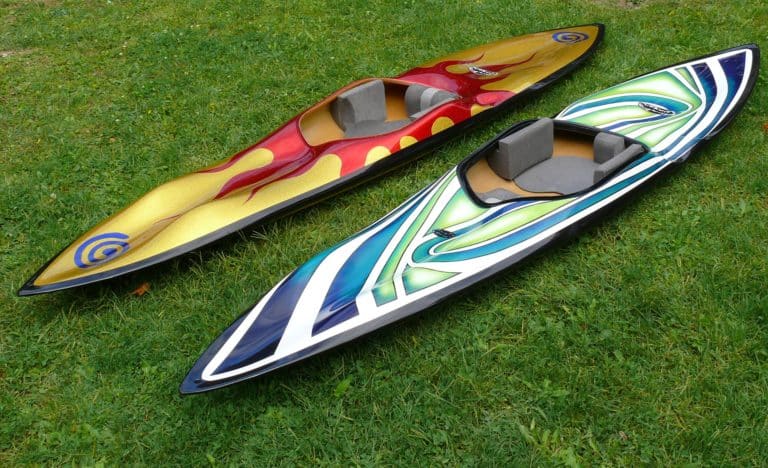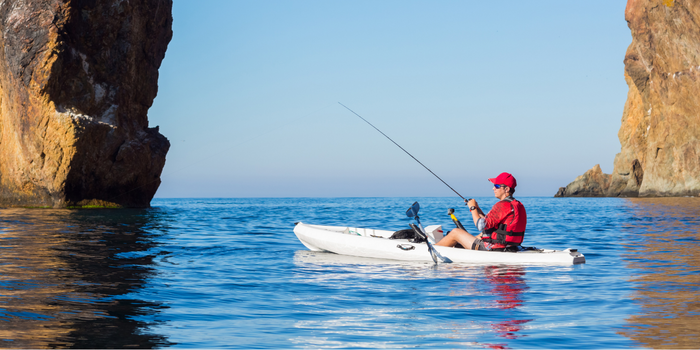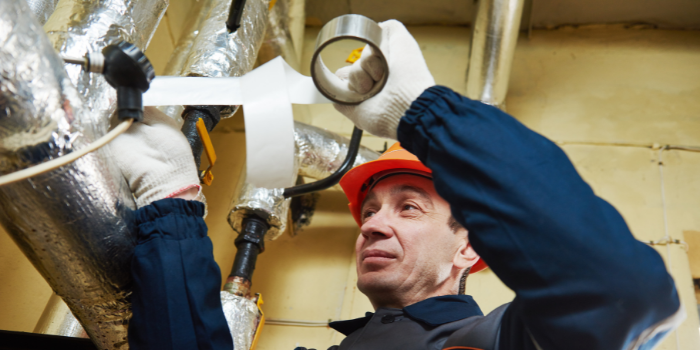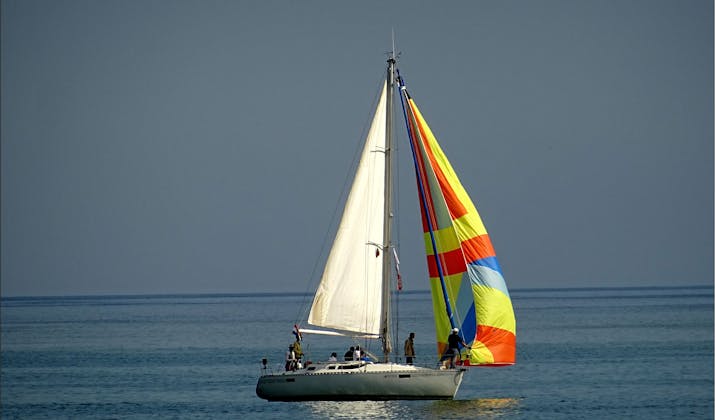Winter kayaking isn’t always as cold as it sounds. In fact, many kayakers prefer the winter months because there are many fewer people on the water and the sights are invariably different than the other months of the year.
But winter kayaking requires more preparation and respect for the elements than casual paddling out on an 80-degree summer day. That’s why you need to know the top 10 winter kayaking tips & tricks for beginners if you’re new to the sport.
Just because the overnight temperatures are dropping below freezing, that’s no reason to lock your kayak in storage all winter. With these tips and tricks, you’ll be well on your way to enjoy breathtaking scenery from your kayak all year long!
Winter Kayaking Tips & Tricks For Beginners
If you’ve never kayaked in the winter, or you’re new to kayaking altogether, make sure you read through our top 10 winter kayaking tips & tricks for beginners closely so that you can ensure a safe and enjoyable winter paddling experience.
1. Get a Drysuit
The nature of winter kayaking means cold temperatures and (sometimes) even colder water temperatures. So the best way to stay warm and dry when winter kayaking is to get a solid kayaking drysuit.
Drysuit technology allows you to wear your regular winter layers underneath a protective layer that keeps you both warm and dry. These suits are 100% water-resistant and most of them are built specifically for winter kayaking.
The alternative to a kayaking drysuit is a more typical wetsuit. But the problem with kayaking in most wetsuits is that they take a lot of time to take off when you need to relieve your bladder.
Most drysuits are designed with a front or back zipper to make going to the restroom possible without entirely removing the drysuit.
And anyone that’s kayaked for any distance knows that getting out to use the restroom happens about once every hour if you’re staying hydrated.
So our first winter kayaking tip for beginners is to get a reliable drysuit to keep you warm and dry while you’re paddling. If you want some drysuit suggestions, check out our article on the best kayak drysuits!
2. Dress in Layers
This is a common tip for any sort of winter recreation and it’s just as important for winter kayaking as it is for downhill skiing, snowshoeing, or cross-country skiing. While early morning temperatures will cause you to bundle up, temperatures often become much more comfortable as the day goes on.
On the other side of the token, you might go out in the “heat” of a winter afternoon and come back once the sun goes down. In either case, you’ll need to dress in layers (or at least pack them) to make sure you’re prepared for these changing temperatures.
While you should be wearing a drysuit as your outermost layer during winter kayaking, you can layer underneath much as you would for hiking in colder weather. The closest layer to your body should be made of some sort of synthetic, non-cotton material.
Although cotton is great for keeping you warm, synthetic materials are better at wicking moisture away from your body and drying quickly when they do get wet.
Synthetics are great for winter kayaking because they won’t keep moisture against your skin, which will ultimately make you feel much colder.
That being said, it’s also a good idea to pack a few dry layers to change into just in case any of the layers you wear do get wet. In this case, it can be good to have a cotton layer to put on when you’re done kayaking and loading up to head home.
While you can opt to leave these layers in your vehicle if you’re only going out for a short paddle, we recommend always bringing some extra layers with you on your kayak. To do this, you’ll need to select one of the best kayak deck bags to pack your clothes into so that they stay dry.
3. Always Wear A PFD
As far as we are concerned, this rule is essential for kayaking during any season. Outfitting yourself with one of the best kayak life vests (or PFDs) is the safest way to keep yourself afloat and make it easier to climb back into your kayak if you capsize.
For those that are unfamiliar with the term, PFD is shorthand for ”˜personal flotation device.’ While most of us grew up calling them ”˜life jackets’ the paddling community is getting away from that term because it’s important to note that these jackets alone are not life-saving.
They do provide extra flotation for your body weight to keep you afloat if you capsize. Our bodies are naturally buoyant because we are actually made up of about 80 percent water.
On average, another 15 percent of a human’s body weight is fat, which is lighter than water. The remaining five percent of our body weight is actually all that a quality PFD needs to keep afloat if we fall in the water.
For example, a 200-pound person has about 10 pounds of bone and muscle mass that must be kept afloat after a wet exit. Thus, you’ll need a PFD rating for a minimum of 10 pounds of flotation.
That being said, it’s always good to err on the side of caution and find a PFD that’s rated for five to 10 pounds more than the weight of your body that must be kept afloat.
For more information on calculating the amount of flotation that you’ll need from a PFD, check out this article.
4. Use A Sit Inside Kayak
If you’re a beginner, the easiest type of kayak to learn in is actually a sit on top kayak. But we wouldn’t recommend using a sit on top kayak for winter kayaking, and there are a few important reasons why.
For starters, sit on top kayaks are best for beginners to learn how to paddle a kayak because they have scupper holes that allow water to drain out if you capsize.
The problem with this design feature for winter kayaking is that these holes also allow a minimal amount of water into the cockpit of your kayak.
In addition, sit on top kayaks offer minimal storage space because they are designed for shorter paddle trips. But when winter kayaking, it’s even more important that you have space to bring all of the kayaking essentials onboard.
For these major reasons, we recommend choosing one of the best sit inside touring kayaks for winter kayaking. These kayaks will help you enjoy a drier paddle and will also give you plenty of space to keep your winter kayaking gear secure.
Most sit inside kayaks offer both wet and dry storage areas.
The bulkhead compartments are great places for keeping a small dry bag with extra layers and bungee straps on the deck are great for securing a bilge pump or other essentials that are okay to get wet.
The only caveat with sit inside touring kayaks is that they can be a bit less stable than sit on top kayaks.
So we recommend finding a place to take a few lessons in warmer waters so that you feel comfortable in your sit-inside kayak before going out on a chilly winter day.
5. Attach A Spray Skirt
Another important benefit of getting a sit-inside touring kayak for winter kayaking is that it will allow you to attach one of the best kayak spray skirts.
This is an impossibility with sit on top kayaks, so it’s another good reason why sit on tops aren’t the best for winter kayaking.
Spray skirts secure around the edge of the kayak’s cockpit and they keep the lower half of your body protected from wind, waves, and other weather elements.
If you’ve never used a kayak spray skirt, you’ll be surprised how much warmer they’ll keep your lower body once installed.
Attaching a spray skirt to your sit-inside kayak also gives you additional dry storage space inside your kayak. So you can even keep a small bag with essential snacks and other supplies between your legs without worrying about it getting wet.
Fortunately, most kayak spray skirts are compatible with different kayak designs. But when you’re searching for a new spray skirt, it’s best to start by measuring the dimensions of your kayak’s cockpit.
These length and width dimensions are best measured from the top edges of the cockpit.
The common unit for these measurements is in inches and, fortunately, most kayak manufacturers should openly advertise the cockpit dimensions of their kayaks if you don’t have a measuring tape handy.
But installing a spray skirt on your sit-inside kayak comes with the same warning as making the jump from a sit on top kayak to a sit-inside kayak. You’ll need to find safe, supervised conditions in which to practice removing the skirt and exiting the kayak if you capsize.
This skill isn’t intuitive for everyone, so you’ll need to make sure you practice in a safe environment before launching on a winter day. We can’t stress this point enough, as prolonged exposure to cold water is one of the biggest dangers of winter kayaking.
6. Put Your Feet in Booties
On that same note, the first body part that often gets cold when we kayak in the winter is our feet. This is natural because our bodies are built to shunt blood to our body’s core when temperatures start to dip below freezing.
This can leave minimal blood circulating to keep our feet warm and it’s the major reason why you should always wear a pair of insulated kayaking booties when kayaking in the winter.
These booties come in various thicknesses depending on the exact conditions in your area.
For example, we tend to use three-millimeter booties even when we go out for sunset paddles during the summer months in the mountains. So we’d recommend finding booties that are five to seven millimeters in thickness for winter kayaking.
These booties aren’t meant to keep your feet 100% dry, but the water that does enter them will quickly warm up to the temperature of your body. This is the same basic principle that makes the best kayaking wetsuits functional for seasonal use.
But the fortunate part about kayaking booties (sometimes also called water shoes) is that they also protect the bottoms of your feet against sharp rocks and uneven terrain when you get out of your kayak.
These booties serve a dual purpose and they are the best way to keep your feet comfortable when winter kayaking.
They’ll keep your toes insulated while protecting your feet and giving you grip when you need to climb out onto a rocky shoreline.
There are many different manufacturers of kayaking booties and water shoes out there and thickness isn’t the only feature you’ll need to pay attention to when choosing. So if you’re looking for a new pair of kayaking booties, check out our article on the best shoes for kayaking.
7. Keep Your Head Warm
Most of us grew up learning that we lose a great deal of body heat out of the top of our heads when it gets cold. While there are some recent disputes over the exact percentage of heat we lose through our heads, the fact remains that insulating our noggins is essential for winter kayaking.
In addition to keeping heat from escaping out the top of your head, you need to protect your ears from the colder outside environment. For this reason, you may need to combine multiple pieces of headwear when kayaking in the winter.
If you choose a drysuit that comes with a hood, you’ll already have the perfect rainproof head covering built into your outermost paddling layer.
But these hoods don’t usually offer much in the way of insulation, so you’ll probably need to wear a winter beanie or insulated cap underneath.
In some conditions, you might even elect to wear a traditional baseball cap with an insulated Buff or neck warmer over it.
This gives you the flexibility to pull the Buff down around your neck if the conditions warm up and it won’t leave you with a loose item that you’ll need to find a place to store in your kayak.
If you’re the kind of kayaker that prefers a full-brimmed hat for paddling, consider the benefits of wearing a thin beanie or balaclava under the hat for added insulation. This will keep your head warm while still protecting your eyes from the winter sun.
Additionally, a proper wetsuit hood can also be the go-to choice for winter kayaking. This piece of headwear is more common for whitewater kayaking, however, because of the increased likelihood of full submersion throughout the course of the paddle.
8. Insulate Your Hands
In addition to your feet, your hands are often one of the hardest body parts to keep warm during winter kayaking. They also don’t have the advantage of being tucked away and protected from the elements inside your kayak like your feet do.
Your hands have to do the majority of the work when winter kayaking and they are also exposed to the elements for the entirety of your time out on the water. For these reasons, you’ll need to insulate your hands by finding a thick pair of the best gloves for kayaking.
Just like the case was for kayaking shoes, the thickness of kayaking gloves is measured in millimeters. Some kayaking gloves have fingers for maximum dexterity and others look more like mittens.
Your choice is ultimately up to your personal preference. Many experienced kayakers prefer gloves with fingers because they do offer that extra dexterity that kayaking mitts simply cannot compete with.
However, some folks swear by mitts because they keep all of your fingers together rather than separating them. This can actually keep your fingers warmer overall and make your hands more comfortable on the water.
The other benefit of kayaking mitts is that some are designed with straps that allow you to permanently hook the gloves to your kayak paddle.
This reduces the amount of effort you have to exert when holding your paddle and is often most useful on longer winter kayaking expeditions.
That being said, kayaking mitts will essentially eliminate your dexterity and ability to perform any small or large tasks that require you to pinch or squeeze anything between one or two fingers.
For example, simply squeezing the zipper to take a snack out of your PFD can be difficult when wearing kayaking mitts. In these cases, you may end up removing the mitts altogether, which ultimately exposes your hands to the cold air temperatures.
9. Check (And Double-Check) The Weather Forecast
You can never check the weather too many times before heading out for your winter kayaking trip.
This is a rule-of-thumb for paddling in general, but the consequences can be more drastic if you fail to plan for inclement weather when paddling during the winter months.
At some point, most kayakers should become familiar with the 120-degree rule. This rule states that the combined temperature of the water and the air should be above 120 degrees if you’re going to paddle without a wetsuit or drysuit.
While we’d never recommend paddling without a wetsuit or drysuit in the winter, this rule is still important for kayakers to know and follow year-round. It will help you greatly reduce your risk of hypothermia and other cold-related illnesses when paddling.
In addition to that rule, many places experience heavier-than-normal winds during the winter months. And when these winds pick up and sustain, they can also result in large wave action on what you’re used to being a calm, serene lake during the summer.
So it’s best to talk to anyone with previous experience winter kayaking in your area before planning your trips. This will greatly help you get a better understanding of typical weather patterns in your area and learn what times of day are the safest for winter kayaking.
In addition, we recommend using multiple weather apps to check the wind and weather forecast in your area.
Ventusky is one of our favorite apps for tracking wind patterns and predicting which way you should start out your paddle so that winds are in your favor on the return journey.
When it comes to checking the weather, however, you really can’t overdo it. What you saw when you checked on the eve of your paddle can often change by the time you wake up eight hours later. So double-checking the weather is definitely a winter kayaking best practice!
10. See The Stars!
Our final tip has everything to do with enjoying winter kayaking rather than worrying about everything that can go wrong. While we don’t want to underestimate the importance of being adequately prepared for winter kayaking, we wanted to end with an important benefit of kayaking in the winter.
Winter days are quite often much shorter than summer days, which means fewer hours of sunlight. As a kayaker, you can use this to your advantage to get out and enjoy the stars from the comfort of your sit-inside touring kayak.
While you might cringe at the idea of paddling when the sun isn’t out, all of the aforementioned tips have already helped you prepare for low temperatures when winter kayaking.
The fun part about kayaking during and after sunset is that winds can often calm down once the sun dips below the horizon.
So this allows you to enjoy some of the calmest waters of the winter months while also learning how to spot your favorite constellations in the night sky.
If you do go out for a winter kayaking trip in the evening, make sure to wear a headlamp or attach one of the best kayak lights to the bow or stern of your kayak.
And make sure to bring along a Thermos of hot water so that you can enjoy a cup of tea, hot chocolate, or your favorite winter-time beverage while you’re on the water!
Final Thoughts
These tips are meant to prepare you for winter kayaking and following them will allow you to enjoy your favorite places to paddle at a time of year when most others have their kayaks packed away in storage.
We hope you’ve found our top 10 winter kayaking tips & tricks for beginners useful and we wish you the best of luck on all of your future winter kayaking adventures!


